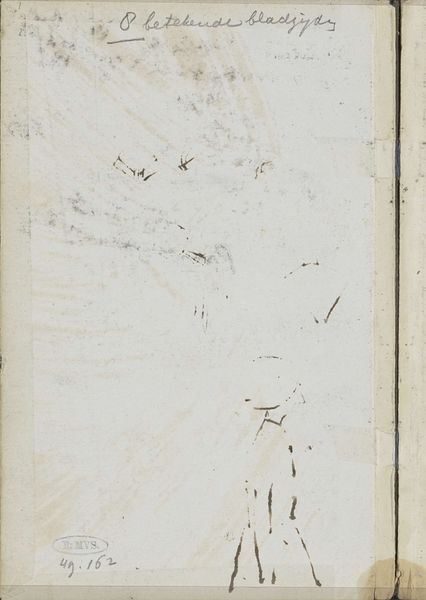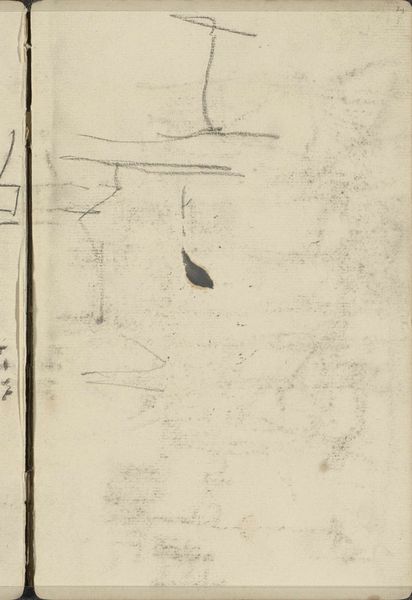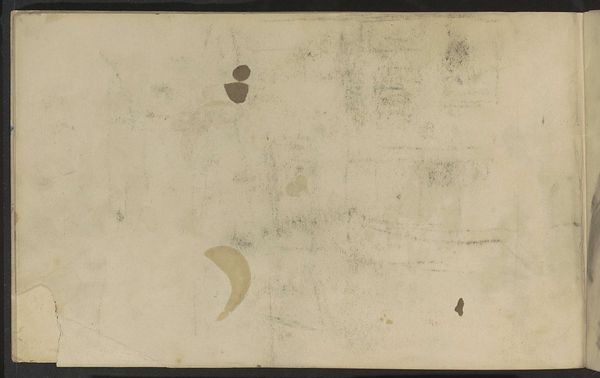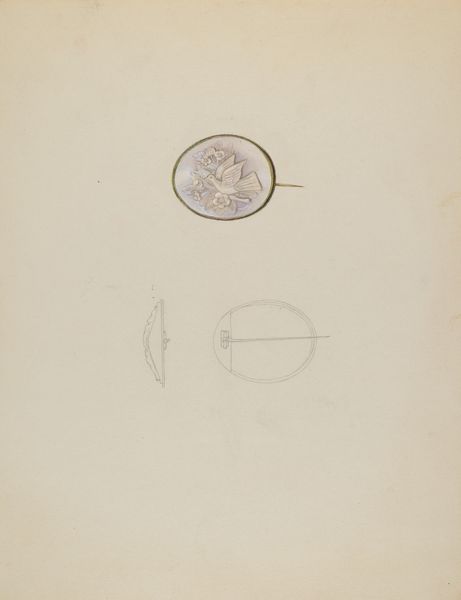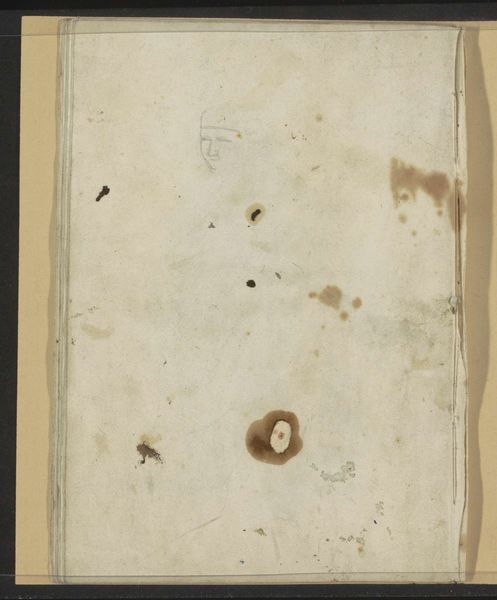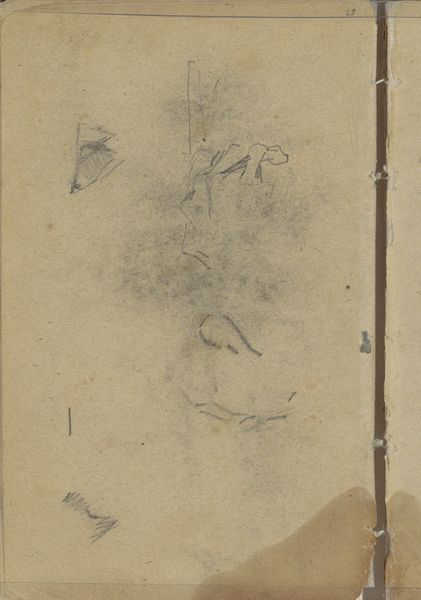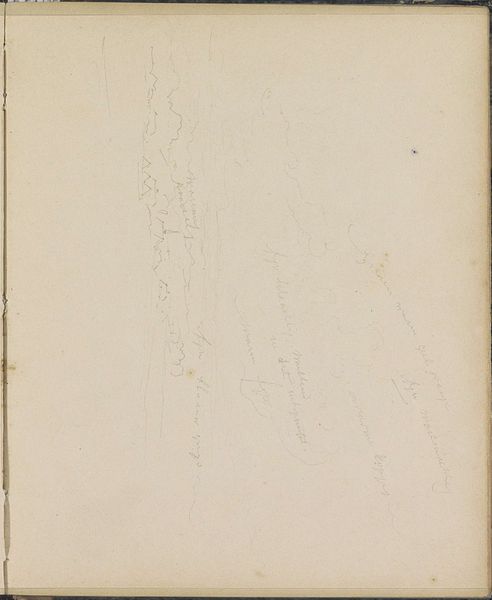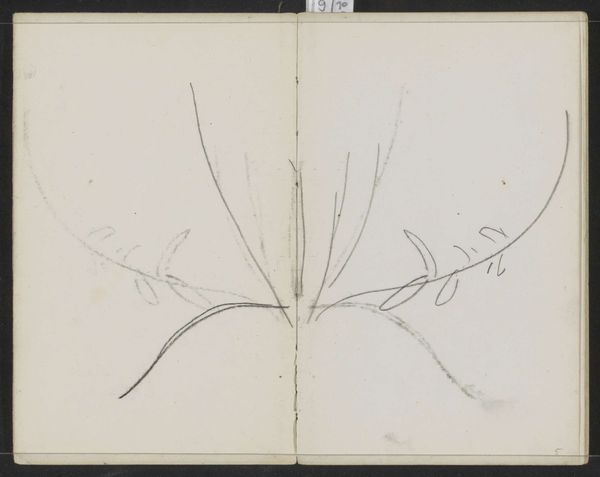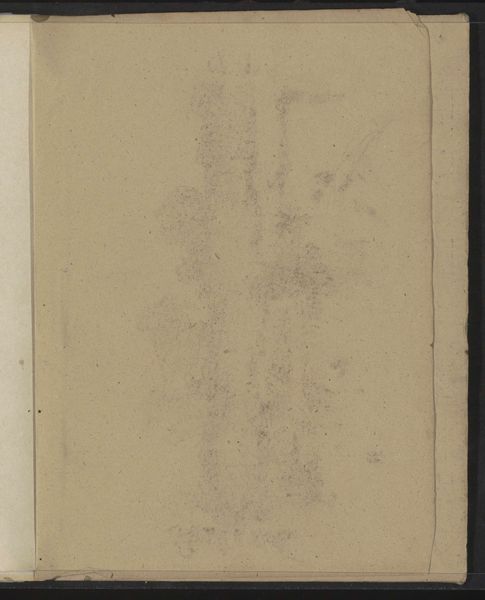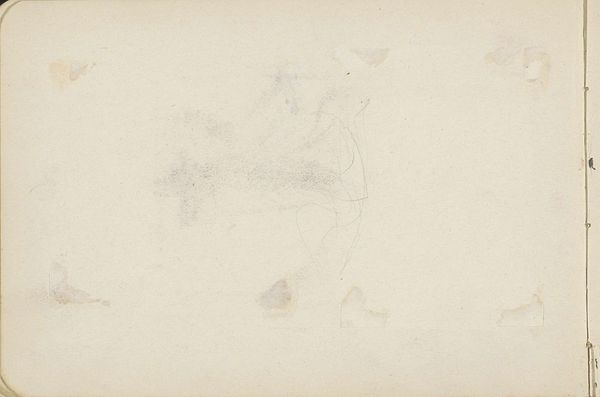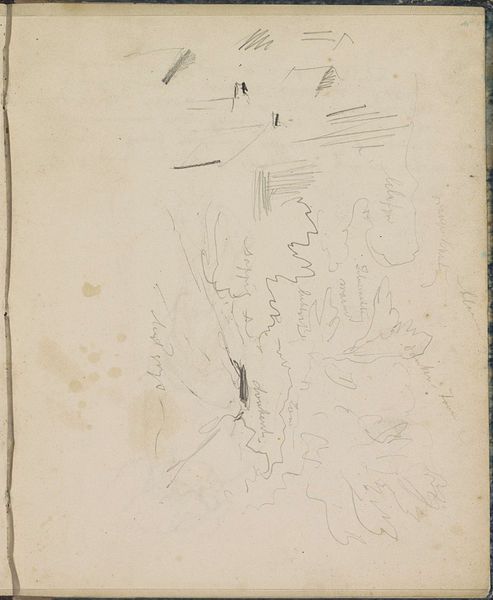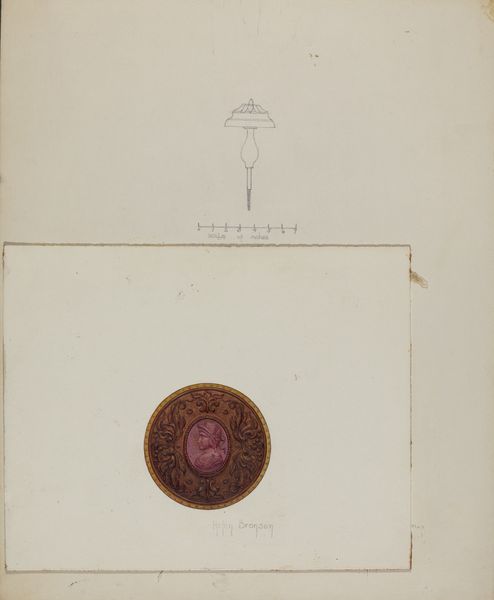
drawing, paper, watercolor
#
drawing
#
impressionism
#
landscape
#
paper
#
abstract
#
watercolor
#
watercolor
Copyright: Rijks Museum: Open Domain
Curator: Let's take a closer look at this work. It's a watercolor and drawing on paper titled "Studie" attributed to Johan Hendrik Weissenbruch and believed to have been created sometime between 1834 and 1903. Editor: Well, my immediate impression is that of incompleteness—almost as though I'm viewing the barest essence of something, faded memories perhaps, captured on paper. There is an inherent intimacy and privacy in viewing works like this that were clearly never intended to be shown, offering a look into an artist's process. Curator: Indeed. Its value lies in those aspects of its creation that allow us to understand the culture around sketch making in the 19th century, especially since this study now resides in the public collection of the Rijksmuseum. How should this access affect the understanding of Weissenbruch and his era? Editor: That raises questions, certainly, about the changing status of sketches in the late 19th century, transitioning from preliminary tools to accepted art objects, due in part to the Impressionist investment in the immediacy of the moment. The ethereal washes of color are especially striking; they allow the work to almost disappear, fading in and out of legibility. Curator: Agreed. Semiotically, what does this piece convey through its abstract elements? Does the minimalist palette amplify certain symbolic implications of light, sky, water… all rendered in almost symbolic abstraction? Editor: That's compelling. Considering it hangs in the Rijksmuseum now, the transition from a study in the artist’s studio to a publicly venerated artwork affects our perceptions. The context inevitably adds layers to its inherent worth as a material expression of that symbolic interplay of sky and land and light you described, transforming it into an object worthy of careful preservation and appreciation, of being seen. Curator: Right, transforming both the artwork itself and, indeed, us as beholders. It prompts questions about institutional validation and the ongoing reconstruction of artistic value across the years. Editor: Absolutely, seeing the evolution in both meaning and aesthetic appreciation that allows the cultural narrative to keep spinning.
Comments
No comments
Be the first to comment and join the conversation on the ultimate creative platform.
